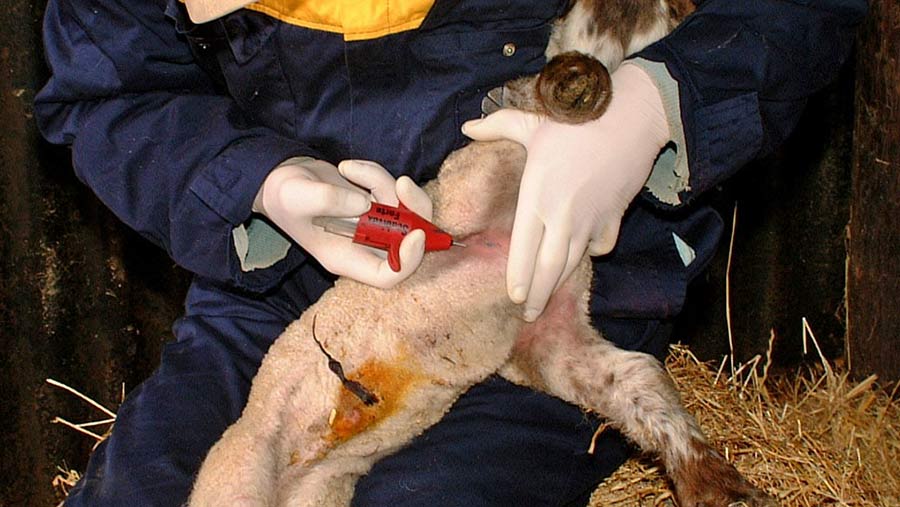6 tips if vaccinating your flock for orf

Vaccinating sheep for orf can be an important step in addressing the costly condition in flocks, but care needs to be taken when using the vaccine, experts warn.
The orf (contagious pustular dermatitis) vaccine is a ‘live vaccine’ and must therefore only be used when orf is confirmed, otherwise farmers run the risk of introducing orf into naïve sheep.
This is according to independent sheep consultant Fiona Lovatt of Flock Health, who said that thistles and rough grazing represent an orf risk factor.
“Anything that can break the skin and allow infection can potentially give orf an opportunity to infect sheep if the virus is present on the farm,” Dr Lovatt told Farmers Weekly.
See also: How to vaccinate for orf disease in lambs
Treating orf
- Treatment is largely unsuccessful, apart from in lambs with superficial secondary bacterial infection of scabs
- Lambs with these scabs show a good response to either intramuscular procaine penicillin or oxytetracycline injections and topical oxytetracycline spray for three to five consecutive days
- Protective clothing and gloves must be worn when handling affected sheep because of the zoonotic risk.
Source: Nadis (National Animal Disease Information Service)
Farmers are advised that the orf vaccine is a POM-V product, meaning it may only be prescribed by a veterinary surgeon following clinical assessment.
“It is always worth farmers carefully reading the data sheet or consulting their vet about how to use any vaccine,” said Dr Lovatt.
MSD animal health veterinary adviser Stephanie Small has issued the following six tips on using the orf vaccine.
- Only use the vaccine in flocks with confirmed cases of orf.
- Pregnant ewes should not be vaccinated less than seven weeks before housing or lambing. This allows time for immunity to build and prevents any infected scabs entering the lambing sheds.
- Immunity develops within four to eight weeks after vaccination, but the vaccine does not offer long-term protection so ewes need to be boosted annually.
- As the vaccine contains live orf virus, watch for pustules developing seven to 10 days after vaccination to ensure it has ‘taken’.
- Always wear gloves when handling the vaccine as orf can be transmitted to humans.
- Lambs are born naïve to the disease so always need to be vaccinated themselves from one day old.
Cost of orf
A farm trial conducted by Dr Lovatt in 2012 found that orf in lambs cost 2.2kg of liveweight in lambs of comparable sizes on the same nutrition and creep feeding regimes.
Costs of orf ranged from £1.06 to more than £14.03 a ewe, depending on severity of cases, effect on lamb growth rate and ewe replacement costs.
If you are interested in sharing your views about orf vaccination, then please go to the Nottingham University survey
